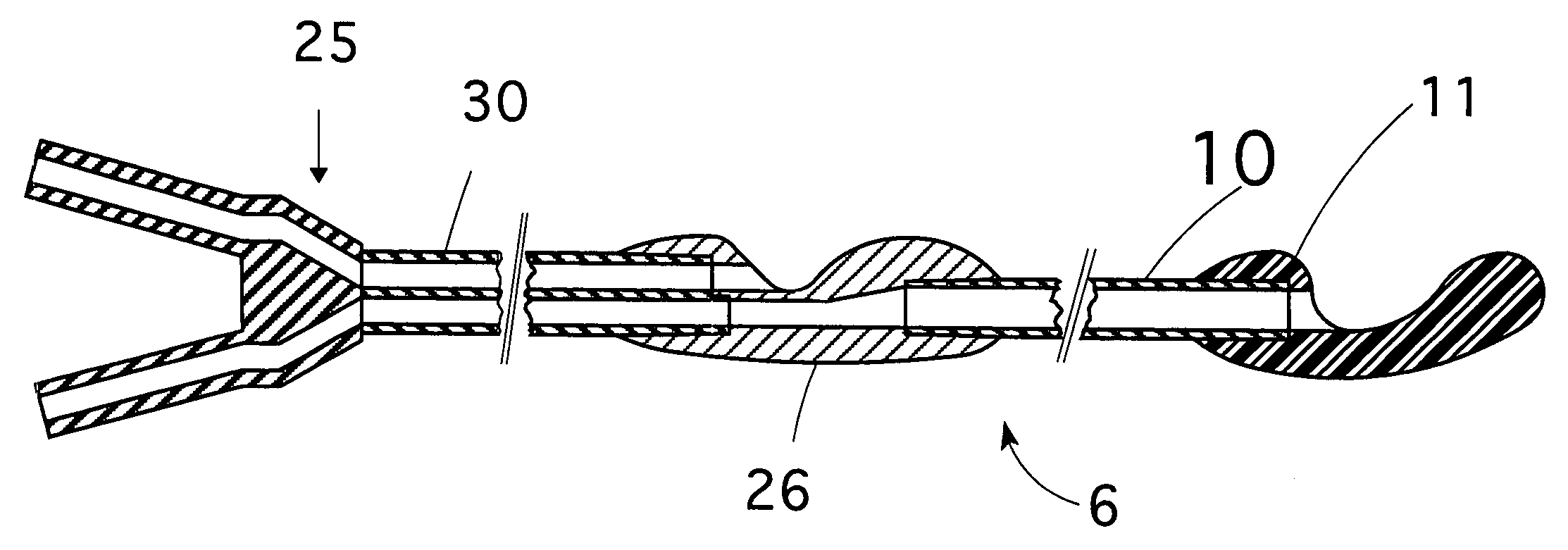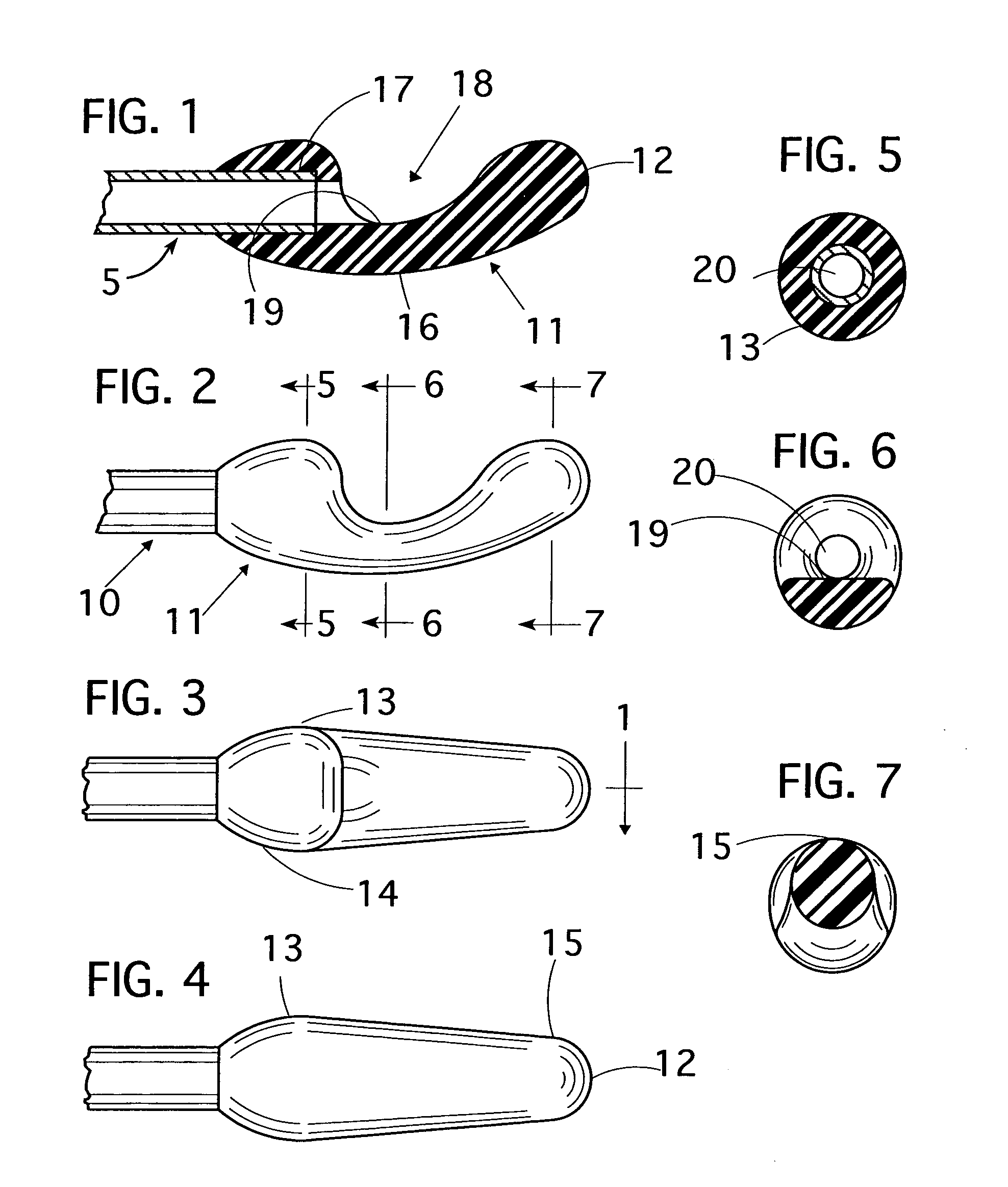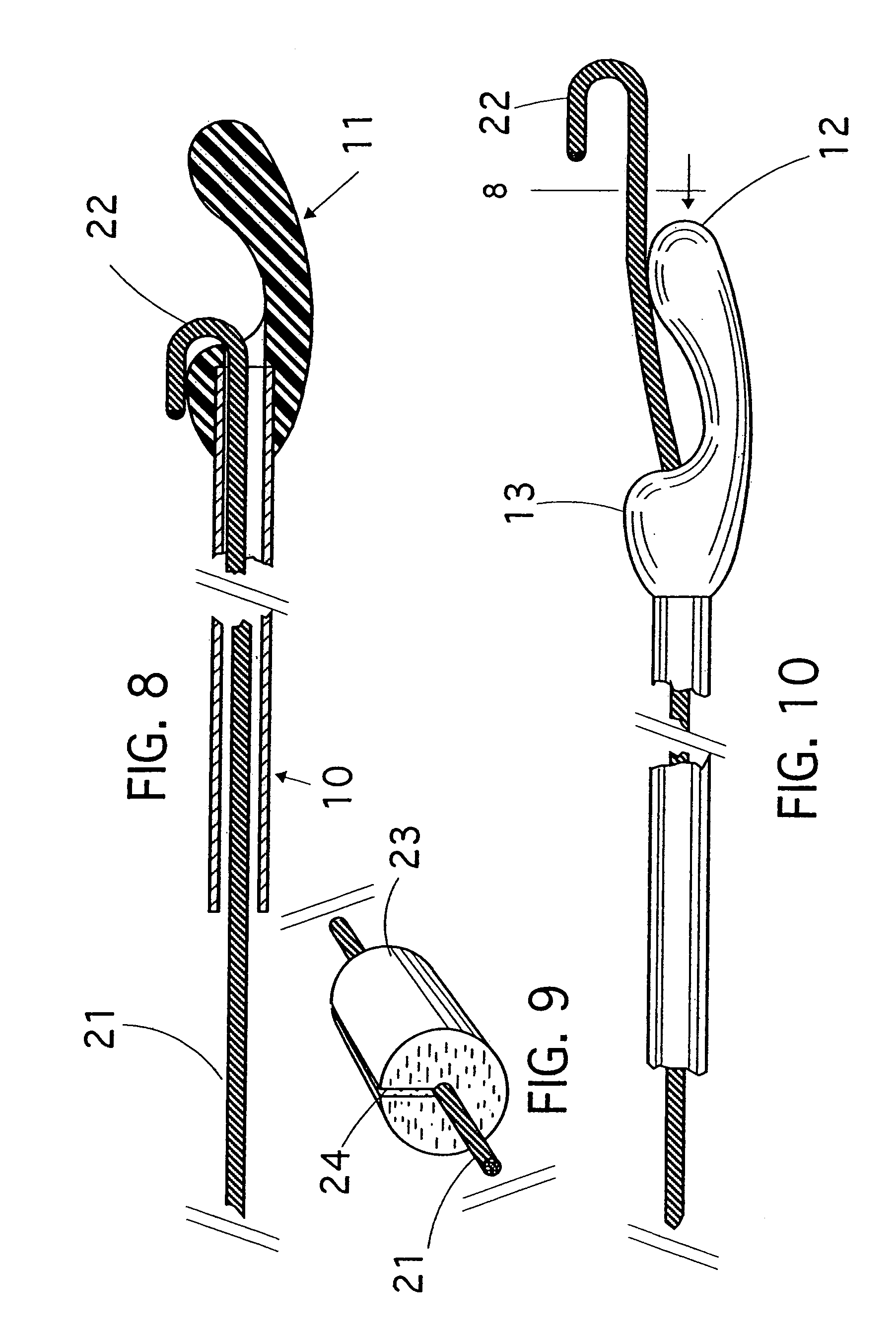Catheter
a catheter and tube technology, applied in the field of catheters, can solve the problems of bending the tube, restricting the use of gastric/jejunal feeding tubes or catheters,
- Summary
- Abstract
- Description
- Claims
- Application Information
AI Technical Summary
Benefits of technology
Problems solved by technology
Method used
Image
Examples
Embodiment Construction
[0069]“Referring now to the drawings, and particularly to FIGS. 1 through 12, a catheter 5 embodying features of the invention includes an 8FR tube 10 shown seated in a socket 17 which extends 0.185 inches into the connector end 14 of a jejunal tip bolus 11. The OD of the bolus 11 at 13, which is shown in FIG. 5, is 0.230 inches. The OD of the bolus 11 at 15, which is shown in FIG. 7, is 0.152 inches. The bolus 11 is a “fat” bolus.”
[0070]A struture 16 in the bottom of the bolus forms an are opposite the port 18. The structural arc 16 prevents bending of he bolus toward the port, i.e., kinking, and subsequent occlusion of the port. The structural arc 16 extends 0.016 inches outside the normal maximum bolus OD of 0.230 inches.
[0071]As seen in FIG. 3, the bolus 11 tapers from its widest point at 13 to its narrowest point at 15. This taper prevents the bolus tip 12 from bending sideways out of the configuration shown in FIGS. 3 and 4.
[0072]Although, the structural arc 16 resists bending...
PUM
 Login to view more
Login to view more Abstract
Description
Claims
Application Information
 Login to view more
Login to view more - R&D Engineer
- R&D Manager
- IP Professional
- Industry Leading Data Capabilities
- Powerful AI technology
- Patent DNA Extraction
Browse by: Latest US Patents, China's latest patents, Technical Efficacy Thesaurus, Application Domain, Technology Topic.
© 2024 PatSnap. All rights reserved.Legal|Privacy policy|Modern Slavery Act Transparency Statement|Sitemap



